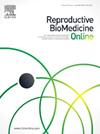孕产妇、生殖和围产期因素与出生缺陷风险:传统因素和新出现的因素
IF 3.7
2区 医学
Q1 OBSTETRICS & GYNECOLOGY
引用次数: 0
摘要
研究问题:产妇、生殖和围产期因素与重大非染色体出生缺陷的风险之间是否存在关联?这项基于人群的队列研究包括2004年至2018年间出生在纽约、德克萨斯州、马萨诸塞州和北卡罗来纳州的1,126,058名自然受孕的单胎活产婴儿(21,644名有重大非染色体缺陷,1,104,414名没有重大非染色体缺陷)。所有参与研究的儿童都与各自所在州的出生缺陷登记处联系起来,以确定在出生后一年内诊断出的主要出生缺陷,并与该州的死亡记录联系起来。排除有染色体缺陷的儿童。泌尿生殖系统缺陷仅在男孩中进行评估。胎盘和出血问题包括前置胎盘、胎盘早剥、子宫出血和其他大出血,以及分娩时输血或意外子宫切除术。调整后的优势比和95%置信区间采用逻辑回归建模。在主要的非染色体缺陷中,最高的显著风险是妊娠前糖尿病(调整OR为2.48,95% CI为2.25至2.74),其次是胎盘或出血问题(调整OR为1.82,95% CI为1.66至1.99);这种模式在先天性心脏缺陷、胚胎发育缺陷、口面缺陷、胃肠缺陷和肌肉骨骼缺陷中也很明显。高血压(孕前和妊娠期)、曾剖腹产、产妇年龄较大和体重指数较高也是显著的危险因素。结论与重大非染色体出生缺陷最相关的危险因素是孕前糖尿病和胎盘或出血问题;其他显著增加的风险包括高血压(孕前和妊娠期)、曾剖腹产、产妇年龄较大和孕前体重指数30 kg/m2及以上。本文章由计算机程序翻译,如有差异,请以英文原文为准。
Maternal, reproductive and perinatal factors and the risks of birth defects: traditional and emerging factors
Research question
Does an association exist between maternal, reproductive and perinatal factors, and the risks of major non-chromosomal birth defects?
Design
This population-based cohort study included 1,126,058 naturally conceived singleton live births (21,644 with and 1,104,414 without a major non-chromosomal defect) who were born between 2004 and 2018 in New York, Texas, Massachusetts and North Carolina. All study children were linked to their respective state birth defect registries to identify major birth defects diagnosed within the first year of life, and to state death records. Children with chromosomal defects were excluded. Genitourinary defects were only evaluated in boys. Placental and bleeding issues included placenta previa, placental abruption, uterine bleeding and other excessive bleeding, and, at delivery, blood transfusion or unplanned hysterectomy. Adjusted odds ratios and 95% confidence intervals were modelled using logistic regression.
Results
Among major non-chromosomal defects, the highest significant risks were with pre-gestational diabetes (adjusted OR 2.48, 95% CI 2.25 to 2.74), followed by placental or bleeding issues (adjusted OR 1.82, 95% CI 1.66 to 1.99); this pattern was also evident for congenital heart defects, blastogenesis defects, orofacial defects, gastrointestinal defects and musculoskeletal defects. Hypertension (pre-gestational and gestational), prior caesarean delivery, older maternal age and higher body mass index were also significant risk factors.
Conclusions
The risk factors most strongly associated with major non-chromosomal birth defects were pre-gestational diabetes and placental or bleeding issues; other significantly increased risks were hypertension (pre-gestational and gestational), prior caesarean delivery, older maternal age and pre-pregnancy body mass index 30 kg/m2 or above.
求助全文
通过发布文献求助,成功后即可免费获取论文全文。
去求助
来源期刊

Reproductive biomedicine online
医学-妇产科学
CiteScore
7.20
自引率
7.50%
发文量
391
审稿时长
50 days
期刊介绍:
Reproductive BioMedicine Online covers the formation, growth and differentiation of the human embryo. It is intended to bring to public attention new research on biological and clinical research on human reproduction and the human embryo including relevant studies on animals. It is published by a group of scientists and clinicians working in these fields of study. Its audience comprises researchers, clinicians, practitioners, academics and patients.
Context:
The period of human embryonic growth covered is between the formation of the primordial germ cells in the fetus until mid-pregnancy. High quality research on lower animals is included if it helps to clarify the human situation. Studies progressing to birth and later are published if they have a direct bearing on events in the earlier stages of pregnancy.
 求助内容:
求助内容: 应助结果提醒方式:
应助结果提醒方式:


